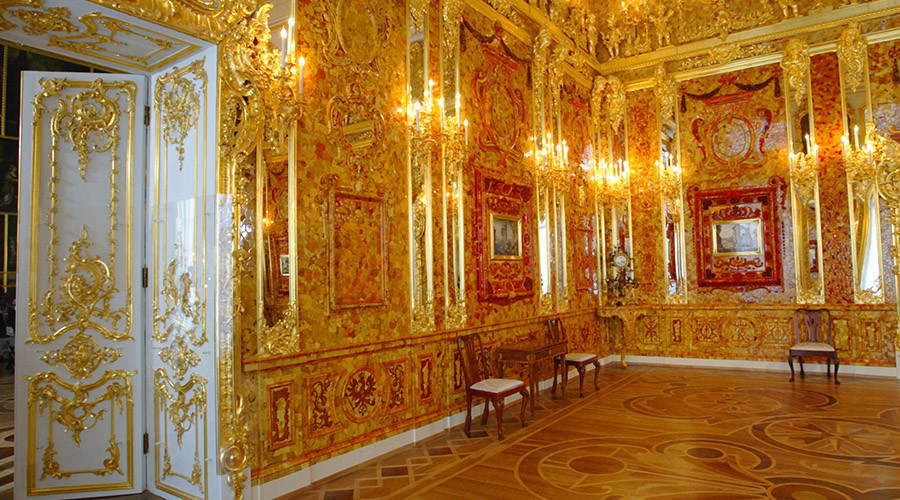
The story of the train, lost to the world for 70 years, does seem to be real, according to official Polish claims, which follow reports by two treasure hunters. The authorities have warned foragers to steer clear, claiming there is a possibility the train could be booby-trapped. Not only the fortune seekers, but the Polish authorities as well, have been on the hunt for the legendary treasure for decades.
However, the find's authenticity remains in dispute. Despite wide accusations that last week's claim was a hoax, Piotr Zuchowski, head of national heritage at Poland's Culture Ministry, said he has seen a geo-radar image of what is claimed to be the discovered train. As shown in the picture, it would be more than 100 meters long. The data was presented by the lawyers of the two men who say they found it.
Local tales claim that the train vanished near Ksiaz castle, about two miles south-east of Walbrzych.
But the discovery - which already has everyone excited at the prospect of finding gold, gems and precious metal ores worth an estimated $385 million - could contain an even bigger prize, according to Tom Bower, a prominent British investigative journalist and author of several books, including Nazi Gold: the Full Story of the Fifty-Year Swiss-Nazi Conspiracy to Steal. He is particularly known for a series of investigations into WWII topics, as well as his unauthorized biographies.
#VIRAL: Claims of Nazi gold discovered on treasure train in Poland http://t.co/ukCDszaaL2 pic.twitter.com/8vFanqqpDJ
— RT (@RT_com) August 22, 2015Referred to as the Eighth Wonder of the World, the room - originally designed as a study - was presented by Prussia's Friedrich Wilhelm I to Russian Tsar Peter the Great in 1716. It was looted by the Germans sometime in 1941, who then took it to Koenigsberg - now Russia's Baltic exclave, Kaliningrad. All traces of it have been lost since.
A great deal of art was stolen by the Nazis in wartime Europe, so the story is not all that extraordinary, Brown says. But "If it is an art train there will be a huge amount of paintings, perhaps diamonds, rubies, precious stones," he said, adding that it's not entirely impossible that the fabled "amber room" could be concealed there as well.
The hype is getting bigger... Nazi gold train could contain the 'Amber Room' looted in #WW2 http://t.co/EPopxYSIqa pic.twitter.com/gQtUELGQHM
— Klaas Meijer (@klaasm67) August 30, 2015But the Polish are not giving up so easily. Warning people that Russia was allegedly trying to lay claim to the mystery train's contents as war reparations, Zuchowski told Polish Radio Jedynka that "The analysis we have conducted with our lawyers quite clearly states that, if the train is found, it will be owned by the State Treasury."
Interestingly, this is the same Polish minister who earlier said that Russia could be a potential claimant.
The World Jewish Congress has also joined the list of would-be claimants, although an analysis of the allegedly found train's contents would have to be carried out to determine if anything inside had belonged to Jews persecuted by the Nazis.
The Amber Room in the Ekaterininsky palace in the city of Tsarskoe Selo near St. Petersburg, Russia pic.twitter.com/1lm0eB176c
— svetla (@Muche4ka) August 30, 2015"If any of these items were stolen from Jews before they were murdered, or sent to forced labor camps, every measure must be taken to return them to their owners, or their heirs," CEO Robert Singer said in a statement, as cited by The Telegraph.
"In case no survivors or heirs can be found, any gold or other property that is found to have belonged to Jewish families or businesses must now inure to the benefit of Polish Jewish survivors, as they have unfortunately never been adequately compensated by Poland for the suffering they endured, and or their catastrophic economic losses in the Holocaust," Singer said, adding that he hopes Poland will "take appropriate actions" in that event.
The Polish government is asking people not to jump to conclusions, as it will still be "a few months" before workers get to see what's inside, according to Zuchowski.
It also remains to be seen who would take part in determining the value of the contents. Sputnik cited Russian human rights lawyer Mikhail Joffe, who believes Russian representatives "should undoubtedly be involved" in the assessment, and says the evaluation must involve "international experts."
International law has it that the contents belong to the territory from which they were taken, according to Joffe.
Whatever the contents or their value, the finders can expect a 10 percent fee, as per Zuchowski's promises, and should be reimbursed by either the ministry or the owners, he said.
However, premature speculations about the Amber Room may well turn out to be a case of counting your chickens before they hatch. Unfortunately, there is a good chance the room - if it was indeed smuggled out of the burning Nazi city of Koenigsberg - has not survived, as amber is very fragile and needs proper climate control. Lacking this, the fine-crafted jewelry could easily have been damaged beyond repair.



"although an analysis of the allegedly found train's contents would have to be carried out to determine if anything inside had belonged to Jews persecuted by the Nazis"
It doesn't matter, whether "anything inside" had belonged do Jews, or to Indians, or to Aborigins (or to members of any other nation, selected at random) - and whether they have been "persecuted by the Nazis", or not. The only thing, that matters, is: is it possible to point out former owners - and if so, are there any legal heirs. If not, "it will be owned by the State Treasury", as explained.